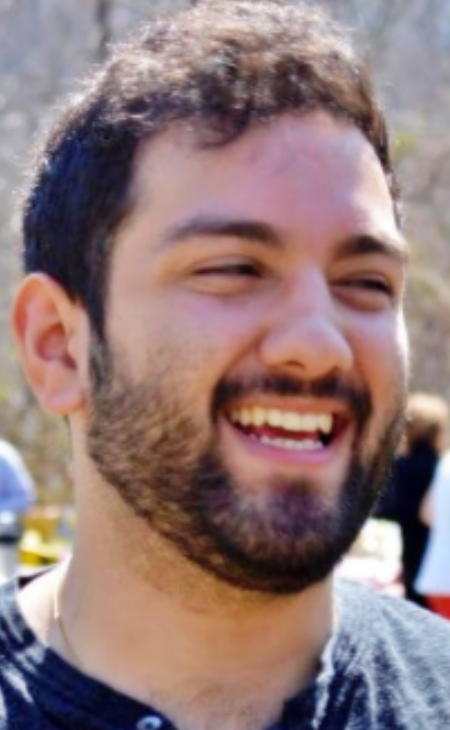September 03 2021

The two Park Police officers who shot and killed Bijan Ghaisar said they fired because they feared Ghaisar was about to run down one of the officers when he started accelerating his car, but an expert witness report to the court says the officer was standing off to the side and was never in any danger of being run down.
Furthermore, the report says the officers were told by radio that Ghaisar, 25, was the victim of a rear-end collision, not the perpetrator, so there was not even any need to pursue him.
The two revelations were the latest developments in the almost four-year-old case that has been moving at a snail’s pace.
In his 320-page expert witness report, City University of New York criminal justice professor Christopher Chapman included not only the previously undisclosed Park Police dispatch recording, but also previously unseen FBI diagrams of where both officers stood as they each fired five shots at Ghaisar.
The officers were not in imminent danger when they opened fire, prosecutors argue. Officer Lucas Vinyard’s lawyer wrote that “it appeared that [Officer Alejandro] Amaya was standing directly in front of the vehicle” and he “feared that the Jeep was going to strike Officer Amaya,” though the video and FBI diagram show Vinyard standing to the side of Ghaisar’s Jeep, and the Jeep is moving away from them, when he first shoots. What’s more the two police officers were standing almost side-by-side so it was odd that Vinyard concluded that Amaya was in front of the Jeep.
Amaya’s lawyers, Jonathan L. Fahey and Travis D. Tull, wrote in their motion to dismiss that it was “only when Ghaisar accelerated in his direction when he was positioned between the Jeep and his patrol car, that he [Amaya] discharged his weapon.”
In a frame-by-frame analysis of the first shots, Chapman concluded, “Officer Amaya was not in a position to have been struck by Mr. Ghaisar’s vehicle when Officer Vinyard and Officer Amaya discharged their firearms.”
It had earlier been reported that the two Park Police officers thought they were pursuing a vehicle that had struck another vehicle and left the scene of an accident. But the report showed that was not true.
Vinyard and Amaya were covering the George Washington Memorial Parkway when a call came over the radio. “Car 212,” the dispatcher said shortly after 7:30 p.m., “southbound GW Parkway at Slaters Lane, I got a motor vehicle hit-and-run…. The striking vehicle is a black Jeep that has rear end damage.”
Moments later, at 7:34 p.m. on Nov. 17, 2017, the officers spotted the Jeep with the vanity license plate “BIJAN.” But the dispatcher had new information. “Correction on all of this,” she told Vinyard and Amaya. “The black Jeep left the scene, but he is not the striking vehicle. The red Toyota on the scene is the striking vehicle.”
One of the officers acknowledged the correction, and repeated the “BIJAN” license plate they were now following. “All right, 10-4,” the dispatcher said, then reminding, “That’s the vehicle that left the scene, that was struck.”
“Copy,” one of the officers said. “He’s not stopping.”
The recording, which for the first time reveals that officers were told at the outset that Ghaisar’s Jeep had been hit by another vehicle, was included in a court filing by Virginia prosecutors who argue not only that the officers committed a crime when they killed him, but also that they never should have aggressively pursued him after he left the scene of a fender bender.
Vinyard and Amaya, Virginia prosecutors contend, violated so many of their depart-ment’s policies and training standards that they were acting outside the scope of their authority. Prosecutors said there was no indication Ghaisar committed a felony or that he posed a “clear and immediate threat to public safety,” both of which would have allowed a pursuit under Park Police policies.
Defense attorneys counter that Ghaisar was driving erratically and was a danger on the road, that he may have committed a felony and that the officers were doing their duty.
A federal judge in Alexandria, Virginia, will soon consider the arguments and what he decides could determine whether the officers, who each were indicted in Fairfax County, Virginia, on charges of involuntary manslaughter, will ever face trial in Ghaisar’s slaying.
That’s because legal precedent has held that federal officers may not be prosecuted by state officials if the officers were performing their authorized federal duties, and “did no more than what was necessary and proper.” Lawyers for Vinyard and Amaya have asked the court to dismiss the criminal charges on those grounds, an outgrowth of the “supremacy clause” of the Constitution, which holds that states must defer to federal law.
The Fairfax County commonwealth’s attorney, that is, the local prosecutor, and the Virginia Attorney General’s Office, which are jointly prosecuting the case, essentially argue that Vinyard and Amaya were out of bounds in their interactions with Ghaisar and are not entitled to those protections.
“The Supremacy Clause,” Virginia prosecutors wrote, “has never contemplated immunity from state charges for federal officers who kill outside the scope of their federal authority.” The Supreme Court has written that Supremacy Clause immunity is reserved for the “exceptional” case where a state’s prosecution will nullify federal laws, the prosecutors argued.